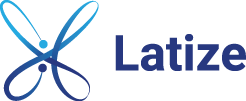
Customer outreach is an extremely powerful marketing tool, but to be used successfully it’s necessary to properly understand how it works. True customer outreach is a very specific and active form of marketing that requires the investment of both considerable time and effort.
What exactly is Customer Outreach?
It’s no coincidence customer outreach is sometimes misunderstood—it is a notoriously difficult concept to define. In the simplest terms, it is an attempt to reach out to potential (and current) customers to educate and drive sales. However, where many businesses fail is in adhering to the need for this outreach to be highly strategic and targeted. For example, a successful customer outreach program or service will have carefully chosen the media (e.g., social media, blogs, or public forums) using available data to match the product and customer profile. In short, it is an active, strategic marketing tactic that seeks to immediately create and maintain relationships with customers and industry partners.
Unlike many other marketing techniques, customer outreach does not seek to throw out a wide net, then subsequently provide those drawn in with more personalised information. Rather, contemporary customer outreach programs are targeted from the beginning, immediately engaging your audience with information and solutions to their particular pain points and preferences. The rewards here are great and feature excellent ROI—but designing and executing the perfect customer outreach program and reaping the associated rewards is no easy task. To successfully identify the right audience and the best way to reach them, you must be able to analyse all the relevant data that is available. And that’s where Big Data comes in.
Big Data refers to extremely large, complex, and mostly disparate data sets that hold valuable information organisations can use to their advantage. This often refers to raw, unstructured data but even in structured form, the volume of data being considered presents a challenge. After the feat of capturing and storing all this data comes the most challenging and most important part of the process: analysis.
Big Data’s Role in Improving Customer Outreach Programs
Due to the specificity required for a successful customer outreach program, the more data available, the better. In this way, decisions are more confidently made when the information is derived from multi-dimensional analysis. Big Data can provide you with vital information such as the demographics and psychographics of your audience, the likely effectiveness of potential sources, the behaviour of your competitors, and more. It is all about determining propensity to act.
However, unprocessed Big Data is of little value. It is simply impossible to go through such a massive volume of data (that is constantly being updated) to acquire the relevant information. What makes Big Data invaluable is the right set of analytical tools that facilitate multi-dimensional assessment. There are three analytical processes that can be considered the “big three,” and are sure to boost the effectiveness of your customer outreach program.
- Descriptive Analytics – This utilises historical reporting and accounting to outline the results of past campaigns and programs.
- Predictive Analytics – This combines the results of descriptive analytics and knowledge of current trends to provide a prediction of how certain courses of action will perform if undertaken currently. With enough data, the accuracy of these predictions is quite high.
- Prescriptive Analytics – This final step is the most powerful tool in a customer outreach program. With all the data analysed and interpreted, recommendations can be offered for the design of outreach programs that will achieve the most desired results. In many customers the ability to predict conversion rates becomes quite deterministic and not just probabilistic!
Gaining Competitive Advantage in Customer Outreach through Big Data
One of the most telling signs of Big Data’s effectiveness is the wholesale adoption of its collection and analysis by the professional association of finance and business leaders, Chartered Accountants. Very few professions require the manipulation of larger and more complex data sets than accounting at its highest level. And one look at any CA/CPA journal quickly shows that the tested and confirmed predictive analysis of Big Data is simply the best way to use information strategically to gain considerable competitive advantages.
But you may say, “How do I know this works for conventional types of marketing?” For that, you’ll need to look no further than one of the world’s most high-profile marketing campaigns: the U.S. Presidential Elections.
Much has been made of Barack Obama’s high-tech (and highly successful) 2012 presidential campaign. At its core was none other than predictive analytics driven by Big Data. One of Team Obama’s greatest victories was their television ad campaign. Instead of just buying expensive prime time airtime on TV stations, they used Big Data analysis to decipher exactly what the voters they wanted to reach were watching and when. This resulted to a cheaper and more effective TV campaign. Obama advisor and advertising budget manager Larry Grisolano once claimed that the campaign “literally knew every single wavering voter in the country that it needed to persuade to vote for Obama, by name, address, race, sex, and income.” While this is no doubt an exaggeration, the results speak for themselves.
With a far smaller budget than that of a presidential candidate, SMEs can also reap the rewards of Big Data analysis to boost their customer outreach programs. Latize’s data intelligence platform Ulysses will help you properly interpret Big Data to build more effective customer outreach programs, giving you a greater chance to acquire and use the insights you need to further improve your business. If you are suffering from the adage that you know that 50% of your marketing works, but not which 50%, then Latize can help.



